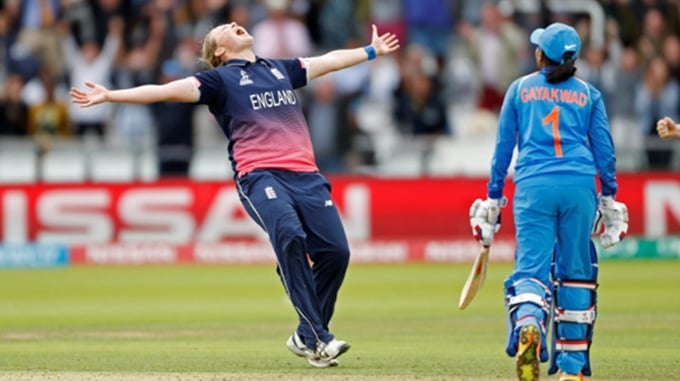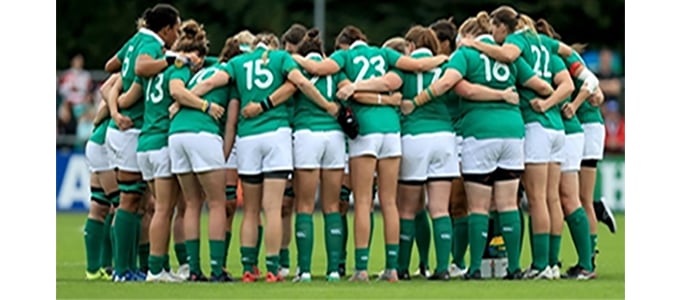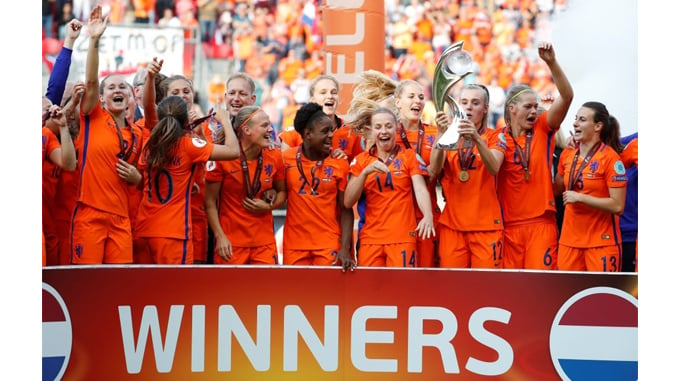Search the latest and greatest job opportunities in sport

The image of Anya Shrubsole, wheeling away in triumph in front of an ecstatic Lord’s crowd after bowling England to a dramatic ten-run victory in the 2017 Women's Cricket World Cup, was one of the most iconic moments of the sporting summer.
The contrast between the 2017 tournament and the inaugural women’s World Cup in 1973 could hardly have been greater. Only the generosity of benefactor Sir Jack Hayward, who donated UK£40,000 to pay for the teams’ travel and hotels, allowed the first competition to go ahead and it was played in front of crowds numbering a few hundred. This year’s final attracted a global television audience estimated at up to 100 million with England’s victorious team claiming UK£600,000 prize money.
Pictures of our jubilant cricketers were plastered over the back pages of most newspapers. A few weeks later it was the turn of England’s soccer players, whose quarter-final victory in the Uefa Women's Championship over France attracted three million viewers on Channel 4, before they emulated their male counterparts by suffering the traditional heartache of defeat in the semi-final – albeit against Holland rather than Germany on this occasion. Now, attention has turned to the women’s rugby World Cup
.It’s a far cry from the days when I edited the Daily Mail’s sports pages a decade ago. During my four years in charge, I cannot remember a single occasion when women’s cricket, football or rugby commanded more than a few paragraphs in the paper.
Compare that to the day I wrote this blog, when The Times sport section devoted half a page to a match report of England’s 56-5 victory over Spain in the rugby World Cup and another half page to a report that Channel 5 had agreed a deal with the ECB to broadcast highlights of the England women’s team matches until the end of 2019.

Ireand's national women's rugby team huddle before their World Cup clash against Japan
So, was I an unreconstructed sexist for failing to give women’s sport the coverage it now regularly commands? If so, I wasn’t alone: no other sports editor at the time was making different editorial decisions from mine.
But I would dispute the charge. I don’t believe these stemmed from outdated attitudes, it was a reflection of the fact that every sport had to jostle for attention – Premier League football being the unstoppable juggernaut that, even then, crushed everything in its path. I had plenty of complaints from rugby league fans that we didn’t cover their sport properly, but never from followers of women’s cricket or football.
The fact is any sport, whether played by men or women, only begins to command extensive media coverage when it establishes a compelling narrative and its stars become personalities in their own right. There is a tipping point – a moment when readers buy into the soap opera, know the names and their back stories and want to follow the next chapter of the saga. Social media has made it easier to achieve this breakthrough moment.
But it can’t be contrived and it doesn’t happen by accident. The quality of the sport on offer needs to be sufficiently high to make us care. In the case of the women’s game, that doesn’t mean it needs to be a carbon copy of the men’s equivalent but it does need to be professional and it needs to be elite.
Michael Atherton, former England cricket captain and now cricket correspondent for The Times, made this comparison in his report of the women’s World Cup Final. "What makes women’s cricket look occasionally pedestrian on television, actually improves the spectator experience," writes Atherton. "Sideways on, it can be a struggle to follow the ball in men’s cricket if a fast bowler is bowling. Yesterday, the top speeds of Jhulan Goswami and Katherine Brunt, the quickest bowlers, were about 70mph — easily followed by eyes, young and old — and the skills of the batsmen and fielders were in evidence everywhere you looked. It is a highly skilled, if slow-paced game”.
It’s highly skilled because cricket’s governing bodies – particularly the England and Wales Cricket Board (ECB) in this country – have invested in the women’s game, creating professional leagues and an infrastructure that allows the best players to fulfill their potential. Compare that to 1973 when Lynne Thomas, who hit a century in England’s opening World Cup fixture, went back to her teaching job in between matches.
The Football Association (FA) has made a similar investment in the women’s game and the Women’s Super League is now the equal of any in the world. Even Manchester United, the sole refusenik amongst Premier League clubs, is considering launching a team. The FA is bidding to host Euro 2021 and, if it wins, has promised matches will be held in front of the 90,000 seats of Wembley among other Premier League grounds across the country. Last time it hosted the event, in 2005, it offered Blackburn Rovers' 30,000-capacity Ewood Park for the final, and all matches were played in the north-west.

The Netherland's women's soccer team celebrate their victory in this UEFA Women's EURO 2017
Women’s football has gone full circle. A recent television documentary reminded us that it was extremely popular in the early twentieth century; in 1920 a match at Goodison Park drew 53,000 spectators, with another 14,000 locked out, but a year later banned women’s football because it was “unsuitable”. A leading doctor claimed: “The kicking is too jerky a movement for women. The hard knocks on the football field are bad for future mothers.”
Any sport is only as popular as its administrators allow it to be – for all the criticism leveled at the “suits” in every sport, they can make or break its popularity. Investment improves the quality of the product, attracting sponsors and creating a market for TV rights, which, in turn, allows continued investment and builds greater interest. It’s a virtuous circle.
Conversely, get it wrong and you find yourself caught up in a vicious cycle. Spare a thought for Europe’s female golfers. Chief executive Ivan Kodabakhsh has stepped down after the cancellation of seven tournaments this season because they failed to attract sponsors. The Ladies European Tour lost almost £1m in 2014 and 2015, according to the latest accounts. Many professionals are increasingly worried they will be unable to make a living from the sport.
No newspaper sports editor can be expected to devote column inches to tournaments that aren’t being played or players confined to the practice range – dinosaur or not.
This article was originally published by our partner SportsPro Media . View the original article here .

Search the latest and greatest job opportunities in sport
In the world of professional sports, sponsorship represents a significant source of revenue and plays a vital role for t...
Read moreThe sports industry is a vibrant and multifaceted industry, made up of a diverse range of sectors that shape its global ...
Read morePablo Romero, director of protocol at Sevilla FC and lecturer in the UCAM Master's Degree in Sports Management, shares t...
Read more